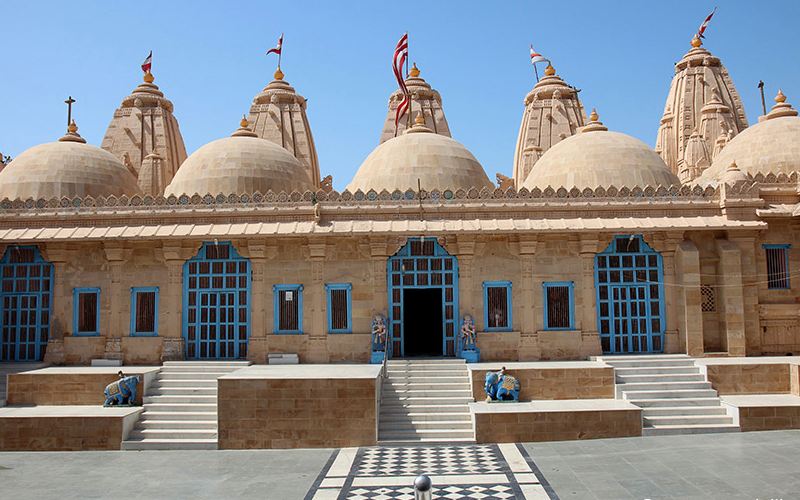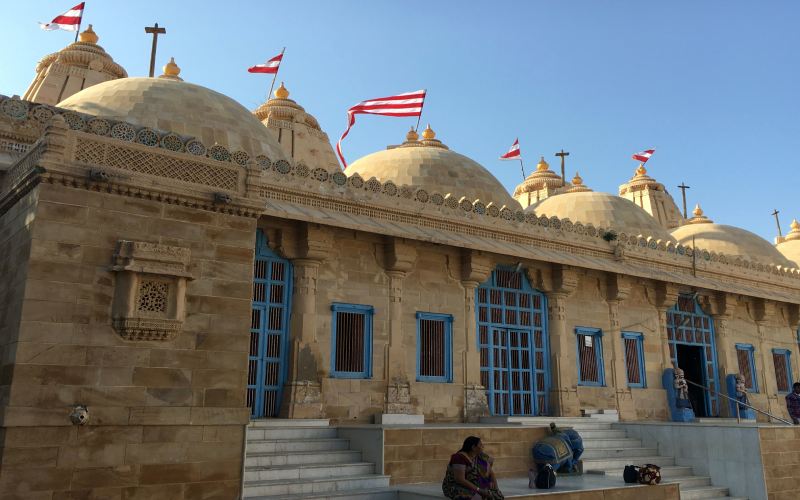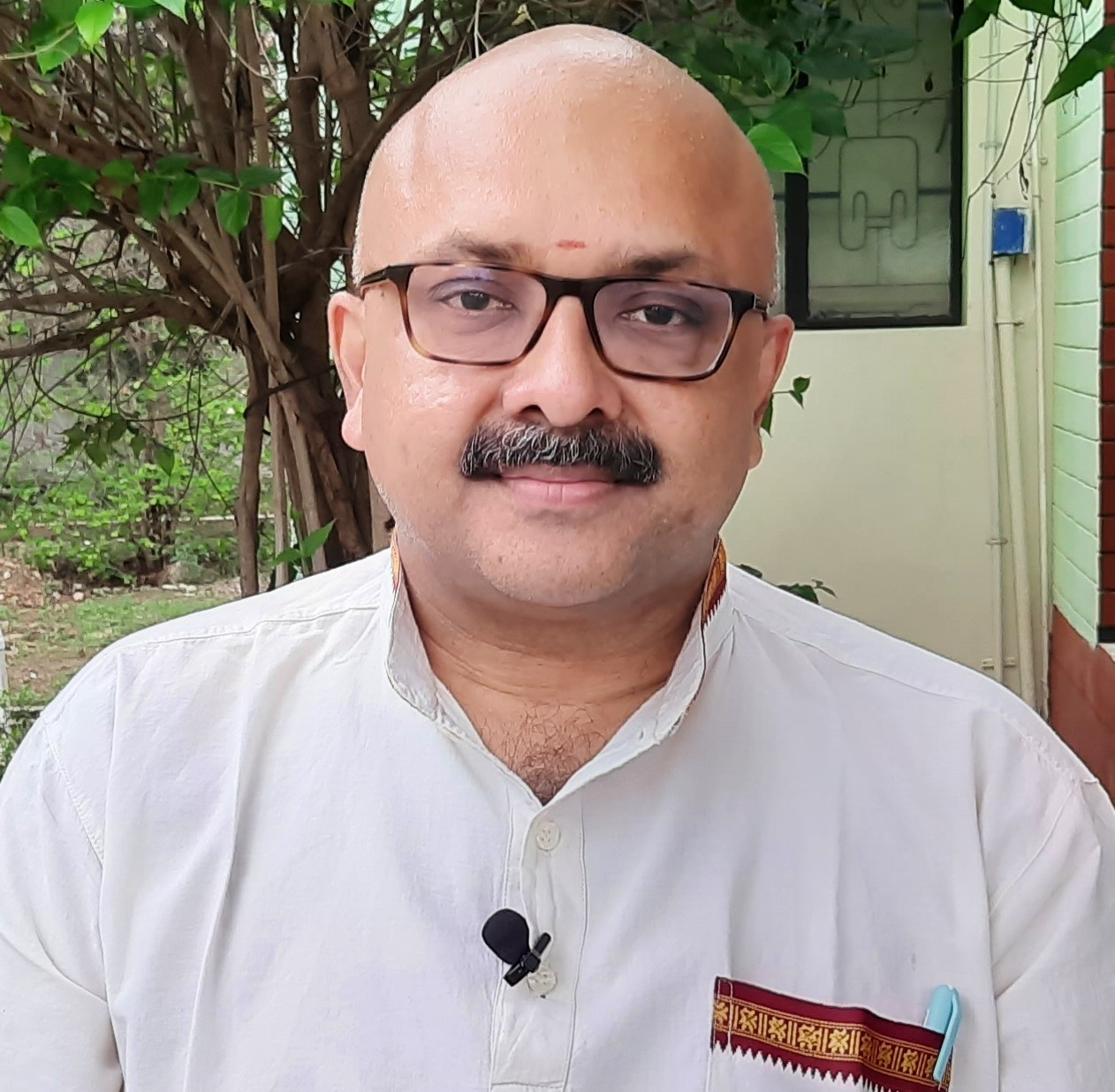
Pushkar hardly needs any introduction. It is found on the pilgrimage circuit of millions of devotees. The city is situated at a distance of 10 kms from Ajmer (Northwest) and about 150 kms southwest of Jaipur. This city is important for Hindu and Sikh pilgrims. Muslim invasions took a toll on Pushkar and many of its temples were destroyed. They were rebuilt during the 18th century. The most famous temple happens to be the Red-sphered Brahma Temple and it was built by Gurjar Samraat Pushkar, the father of Ved Maata Gayathri. According to lore, Ved Maatha Gayathri was a Chechi Kannya married to Brahma.
This city is sacred for the proponents of the Shaakthism Sect among the Hindus and consumption of meat, and eggs, are forbidden here. Pushkar is located on the shore of the Pushkar lake. There are several ghats for the pilgrims who visit this location and also known for its gurudwaras connected with Guru Nanak and Guru Govind Singh. In fact, one of the ghats is known as Gobind Ghat and the others include Varaha Ghat, Dadhich Ghat, and Saptharishi Ghat. Theerth Raj Pushkar is popular for its annual Pushkar Camel Fair. It features a trading fete of cattle, horses, and camels. The fair is held for seven days, and it attracts 2,00,000 people every year. About a million people visit the Pushkar every year and foreigners are found among them in a substantial number.
Pushkar means Blue Lotus flower in Sanskrit, and it is on the western side of the Aaravalli mountains. Brahma had actually slayed the demon, Vajranaabha, with his weapon the lotus flower. In the process, some lotus petals fell on the ground and three springs emerged at those places. The first petal created Jeyshta Pushkar, the second petal created Madhya Pushkar, and the third gave rise to Kanishta Pushkar. It is also said that River Saraswathi emerged from Pushkar as five streams. The three lakes were assigned to Brahma, Vishnu, and Shiva.
Brahma had named this place as Pushkar, and he had performed a yagnya on the sacred location. Since his wife Savitri/Saraswathi could not be present there, he married Gayathri to complete the yagnya. This infuriated Savithri and she cursed Brahma. As a result of this curse, Brahma was left with only one temple in Pushkar. Circumambulating the Hanuman Temple, banyan tree, and Krishna Temple found near the Pushkar lake is believed to be extremely auspicious and it covers a distance of 16 kms. International Business Times has identified Pushkar among the top 10 religious places in the world.
Kalidasa has referred to Pushkar in his immortal poem, ‘Abhignyaana Shakuntalam.’ The ‘Ramayana’ mentions that Sage Vishwamithra had performed a penance at the banks of the river for thousand years. Brahma had granted him the status of being called a maharishi, but yet the great sage continued his penance. The Celestial Nymph, Menaka, came to the river to take a bath and Vishwamithra got enamoured by her beauty. They decided to live together, and the pursuit of pleasure made Vishwamithra realize that his penance was being disturbed. Finally, he took to leave Menaka and went elsewhere for the purpose of continuing his penance.
Kishan Garh is the closet airport and Ajmer is the nearest railway station. Pushkar is near one of the oldest geological structures in India. Microlith (Tools used approximately 35,000 years ago) nearby suggest that the region was populated even several thousand years ago. The Aravalli hills nearby have yielded artefacts belonging to the Saraswathi Civilization. Some pre-Ashokan Brahmi inscriptions are also found close-by. Lots of redware and painted greyware excavated in this location go on to confirm the ancient settlements.
This religious site is mentioned in ‘Ramayana,’ ‘Mahabharatha,’ and in numerous ancient purana-s. Several first-millennium texts mention Pushkar. Some ancient historic, Islamic texts found here describe the raids and conquest of Muslims. Records talk about the conquest of Muhammad of Ghori and also the rule of Qutub al-Din Aibak. It was reconquered by the Hindus under the Chahamanas of Rana Sthamba Puran in 1287 but was taken away by the Delhi Sultanates in 1301. Thereafter, it was under the Muslims for a little over 4 centuries (Until 1712). Muslim rule brought destruction and the armies of Aurangazeb destroyed the Hindu temples along the lake.

The cattle and camel trading tradition brought merchants from far away Afghanisthan. Pushkar came back to life. The Brahma Temple was rebuilt by Gokul Parakh Oswal, The Saraswathi Temple was rebuilt by the Purohits of Jodhpur, The Badhrinarayana Temple was rebuilt by the Takkur of Kherwa, The Shiva Aatmatheswara Temple was rebuilt by the Maratha Noble, Goma Rao, and the Varaha Temple which had been destroyed by Jahangir (1605 – 1628) was rebuilt by Maharaaja Bhakt Singh Ratore of Marwar. The rate of literacy grew, and the percentage of Hindus counted to 94.
The Mughal Emperor, Jahangir, had built a hunting lodge on the shores of Pushkar lake in commemoration of his victory over a local Rajput Ruler. He came there sixteen times for hunting and violated the local tradition of not killing animals around the lake. Because of which the boar avatar of Lord Vishnu (Varaha) reappeared and symbolically hurt the Islamic sensitivity. He committed the idolatrous act of breaking the image of Varaha.
Several Rajput rulers from Amber, Bundi, Bikaner, and Jaisalmer had put in a lot of efforts at Pushkar. Maan Singh I, Maharaana Pratap, Daulat Rao Sindhya, Anaji Sindhya, Govind Rao and the latter day Maharaaja of Jaipur, rebuilt the temples.
The Sikh temple connected with Guru Gobind Singh is important and he had visited this place after having been forced out of Anandpore by Aurangazeb. The shrine was built by the sponsorship of the Maratha empire after the widespread Hindu-Muslim war which began to happen from the latter half of the rule of Aurangazeb. This shrine has an old, handwritten copy of the ‘Gurugranth Sahib’ (Believed to have been written by Guru Gobind Singh), a Hukkum nama and Bhoj patra (A method of recording letters in the 18th century).
The Pushkar Holy represents the triumph of good over evil. The best baang in India is served in Pushkar. The Jagatpitha Brahma Mandir enshrines a life-size idol of Lord Brahma. Pushkar is a major pilgrimage attraction because of its lake. Legend has it that the lake was consecrated to Lord Brahma when a lotus dropped from his hand on this spot. The Hindu scriptures describe the lake as a theertha guru, and this lake finds a mention in coins belonging to the 4th century B. C. The Luni River (The largest river in the Thaar desert), it is also known as Lavana Ravi.
There are more than 500 temples around the lake and pilgrims use the 52 bathing ghats to take a sacred bath. It is specially done around the Karthik Poornima (Mid-October to mid-November). Tourism and deforestation have taken place and conservation methods are being adopted. There was a time when man-eating crocodiles used to be a part of this lake and some pilgrims considered it to be lucky to be eaten by crocodiles.
The medicinal value of the waters is based on the story of a ninth-century Rajput King, Nahar Rao Parihar. He had come that way while chasing a wild boar and had dipped his hand into lake for quenching his thirst. The king was astonished to see that the leukoderma marks on his hand had disappeared. He restored the lake thereafter and people have visited the lake for getting rid of skin problems.
Although the lake was not in the trade-route, it was still important. The second-century inscriptions at Sanchi, attest to the existence of the lake. The fifth-century A. D. Chinese traveller, Fa-Xiang, has made a reference to the number of visitors coming to the Pushkar Lake.
Millions and millions of pilgrims have benefitted by visiting Theertha Raj Pushkar and it will continue to be a global religious destination for eternity.

Mr. Rajesh Govindarajulu is one of the founding members of the Verandah Club Pvt. Ltd. He is a leading columnist, historian, jeweler, entrepreneur, and a heritage enthusiast who is earnestly working to revive the past in the light of the present. Experiential learning about the history of Coimbatore is his main course of interest and he is also a panel member of many colleges in the city.
NEXT ARTICLE